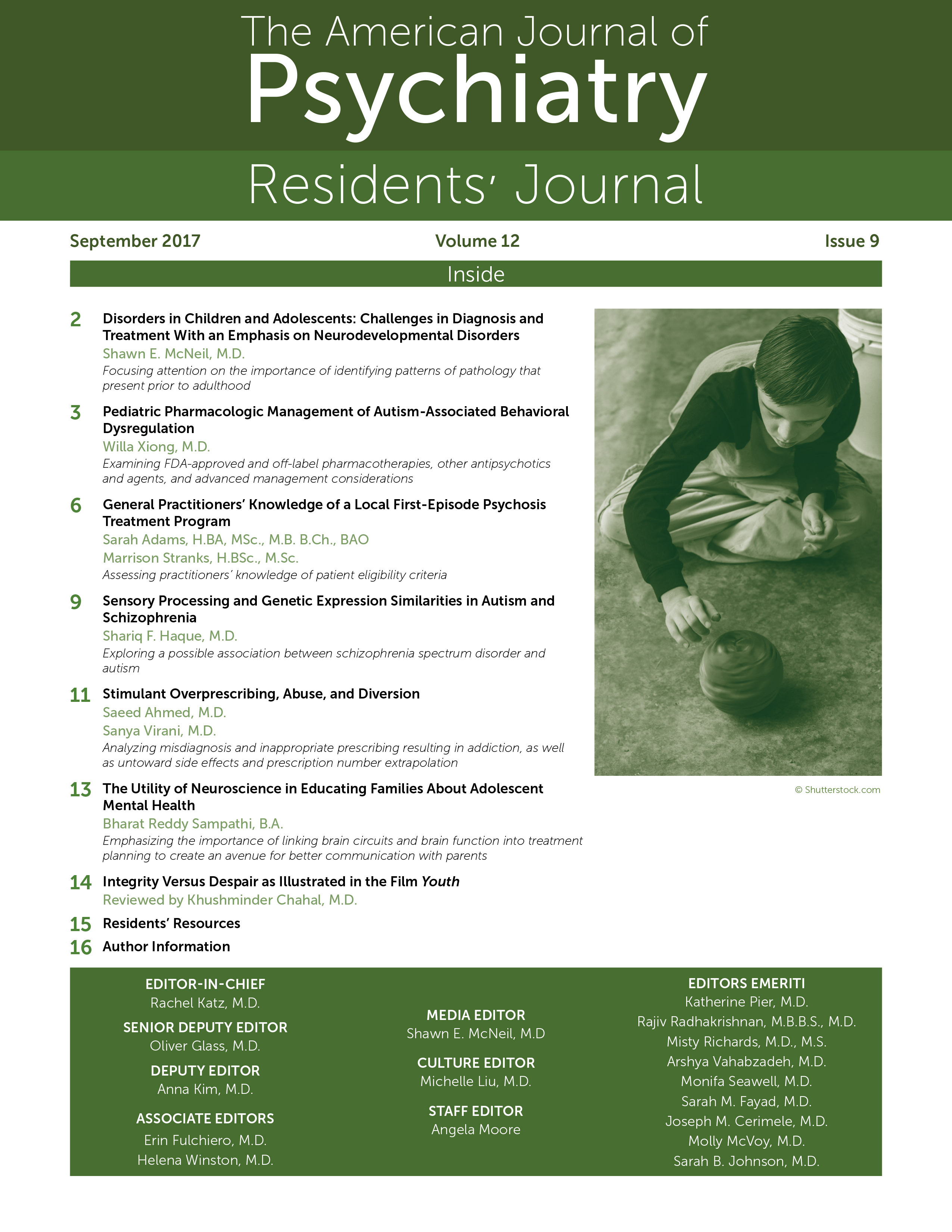Case
“Mr. A” is a 25-year-old man who was admitted to an inpatient unit. He presented as unkempt, anxious, a bit hostile, and psychotic with paranoid delusions and auditory-visual hallucinations. The patient had a history of abusing the psychostimulant amphetamine/dextroamphetamine salts. He admitted first experimenting with the drug during high school, after being introduced to a “smart pill” by his friends. He started using only a few times a month but soon became fully dependent and was using simply to “get high.” His addiction made him increasingly anxious that he would run out of pills, seeking the drug from friends and sometimes the streets. The patient went so far as to feign illness, by mimicking symptoms and presenting himself as a textbook case of attention deficit hyperactivity disorder (ADHD) to a psychiatrist to secure a prescription.
When he was asked about the hallucinations, he stated that the “voice of God” had been speaking to him for a few years and that he had been listening to, and even enjoying, their conversations. If he swallowed the pill, it connected him to God, if he did not, all connections between him and God were severed, and panic would strike. He would become so wrapped up in worry about losing this connection, even for a second, that he had begun taking enough pills to lose count, especially during the previous few weeks. He also stated that he witnessed the “shadow” of God, but the vision remained vague. He indicated that the mundane, inanimate objects of daily life delivered the “heaven-sent” messages that drove him and that car license plates, encoded with God’s numbers, properly deciphered, would guide him in his tasks, while government agents tracked his every move. His visible anxiety and paranoia convinced us that he believed these delusions and hallucinations were real.
Interviews with the patient’s family revealed a baseline behavior that buttressed the findings of interviews conducted independently by two psychiatrists. It was no surprise that he, patently, did not meet the criteria for ADHD. Instead, he was given the diagnosis of substance/medication-induced psychotic disorder.
Discussion
The above case illustrates troubling issues associated with misdiagnosis, inappropriate prescribing of amphetamine/dextroamphetamine, the resulting addiction, untoward side effects, and when prescription numbers are extrapolated, all of which present an increased economic burden on the health care system.
In 2011, the Centers for Disease Control and Prevention reported findings from the National Survey of Children’s Health, which showed that 7.8% and 9.5% of U.S. school-aged children received a diagnosis of ADHD from health care providers based on parent reports in 2003 and 2007, respectively (
1). Notably, this number rose to 11% by 2011. These data may not represent the true prevalence because the survey is based on parental report, requiring parents to recall ADHD diagnosis. The drastic increase in the number is worrisome, but there is considerable evidence indicating that changes in diagnostic criteria, increasing awareness, access to services, and changes in health and education, such as widespread behavioral health screening, may explain the increasing prevalence (
2). This increased prevalence of ADHD diagnoses tends to result in an increased number of prescriptions. Statistics from the National Center on Addiction and Substance Abuse reveal that the number of prescriptions for ADHD in the United States showed a 369% increase, or 23.4 million prescriptions per year, between 1992 and 2002 (
3).
Increasing prevalence of ADHD raises questions about the reliability of diagnostic evaluations by clinicians and subsequently prescribing medication, particularly without consulting a mental health professional (
4). Literature and popular opinion also allude to the increasing pressure by parents and teachers from health care providers to “push” diagnoses (
5), making ADHD a childhood diagnosis with prevalence second only to obesity.
The above case report warrants serious concern because it illustrates fissures in the institutional and clinical system—misdiagnoses, as well as inappropriate prescriptions that perpetuate the cycle of addiction. The ease with which adolescents and youths can “game the system” to procure stimulants from schools, colleges, and the streets, as well as from physicians’ offices, must be addressed. The majority of nonprescription stimulant users obtain the drugs from a peer with a prescription, a process known as diversion (
6). The most common reasons for the use of stimulants for nonmedical purposes among youths are to enhance alertness and concentration, to aid with studying, and to get “high” (
7). Stimulants are common illicitly used drugs among adolescents and college students, second only to marijuana.
What does this all mean? What should be extremely crucial is for clinicians to conduct a thorough evaluation to ensure that they make an appropriate, nonpressured, correct diagnosis and before considering prescribing a medication as a first resort. It is simple: understanding the disorder and constructing the appropriate diagnosis should target, as a rule, the appropriate treatment.
